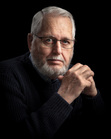The First Alphabet
A thorough understanding of language, grammar and style is essential to the process of writing, so I find the following rather interesting, and I hope you will as well.
The rebus principle refers to the use of symbols to represent sounds; therefore the 26-character English alphabet is based on the rebus principle. The characters are called graphemes, and the sounds they represent are known as phonemes.
An alphabet consists of a set of symbols representing each of the primary sounds of a given language. There may be as many as 400 alphabets in use today, and many others have fallen into disuse over time.
Now let's get on with the history of alphabets.
Egyptian hieroglyphics began as stylised images of the objects they represent, much as did prehistoric cave drawings, but over time Egyptians began using those symbols to represent sounds as well.
Because this dual use of symbols made the message difficult to interpret, additional symbols termed, determinants, were introduced. Used in conjunction with a symbol, they indicate whether it refers to an object or a sound. Thus the Egyptian system of hieroglyphics is not an alphabet.
The very first true alphabet was, however, based on Egyptian hieroglyphs. It originated about 1,840 BCE, at the site of a turquoise mine on the Sinai Peninsula.
In the winter of 1904-1905, at a site known as Serabit el-Khadim, British Egyptologist, (William) Flinders Petrie, found inscriptions believed to have been created by a migrant Canaanite turquoise miner. The characters, simplified versions of Egyptian hieroglyphs, comprised the earliest known alphabet, in that each symbol is representative of a sound in the Canaanite language.
The alphabet created at Serabit el-Khadim was taken back to the migrant worker's home beyond the eastern shores of the Mediterranean. Over time, adaptations of the alphabet spread throughout the languages of Europe, the Middle East, North Africa and Southern Asia.
No writing system based on the rebus principle was ever developed by aboriginals of North or South America, Australia, or sub-Saharan Africa. The reason is that an alphabet, based entirely on sounds, was once a really difficult concept to grasp. This is supported by the fact that only once in human history was such a system ever independently created.
All known rebus-based alphabets, past and present, are believed to have evolved from the symbols discovered at Serabit el-Khadim.
The rebus principle refers to the use of symbols to represent sounds; therefore the 26-character English alphabet is based on the rebus principle. The characters are called graphemes, and the sounds they represent are known as phonemes.
An alphabet consists of a set of symbols representing each of the primary sounds of a given language. There may be as many as 400 alphabets in use today, and many others have fallen into disuse over time.
Now let's get on with the history of alphabets.
Egyptian hieroglyphics began as stylised images of the objects they represent, much as did prehistoric cave drawings, but over time Egyptians began using those symbols to represent sounds as well.
Because this dual use of symbols made the message difficult to interpret, additional symbols termed, determinants, were introduced. Used in conjunction with a symbol, they indicate whether it refers to an object or a sound. Thus the Egyptian system of hieroglyphics is not an alphabet.
The very first true alphabet was, however, based on Egyptian hieroglyphs. It originated about 1,840 BCE, at the site of a turquoise mine on the Sinai Peninsula.
In the winter of 1904-1905, at a site known as Serabit el-Khadim, British Egyptologist, (William) Flinders Petrie, found inscriptions believed to have been created by a migrant Canaanite turquoise miner. The characters, simplified versions of Egyptian hieroglyphs, comprised the earliest known alphabet, in that each symbol is representative of a sound in the Canaanite language.
The alphabet created at Serabit el-Khadim was taken back to the migrant worker's home beyond the eastern shores of the Mediterranean. Over time, adaptations of the alphabet spread throughout the languages of Europe, the Middle East, North Africa and Southern Asia.
No writing system based on the rebus principle was ever developed by aboriginals of North or South America, Australia, or sub-Saharan Africa. The reason is that an alphabet, based entirely on sounds, was once a really difficult concept to grasp. This is supported by the fact that only once in human history was such a system ever independently created.
All known rebus-based alphabets, past and present, are believed to have evolved from the symbols discovered at Serabit el-Khadim.
Published on September 02, 2022 10:05
No comments have been added yet.
Books
Books are more than mere pages of text. They are places we have yet to explore; people we have yet to meet; and emotions we have yet to feel.
- David J. Forsyth's profile
- 10 followers



